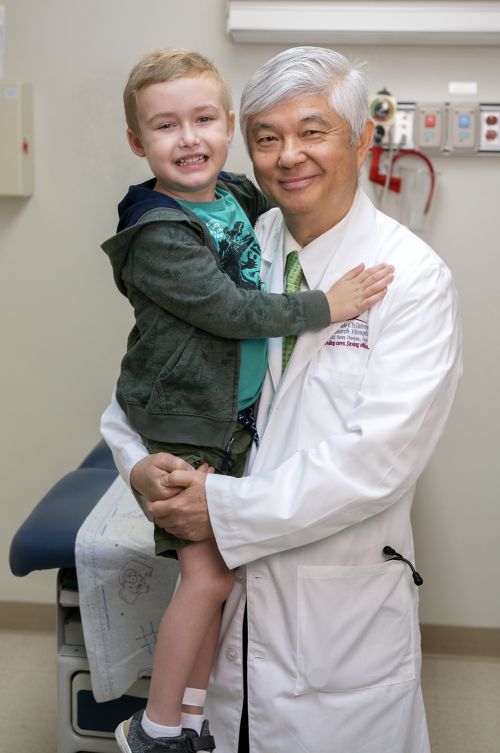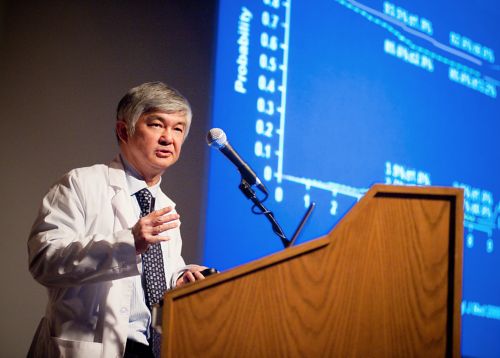St. Jude Family of Websites
Explore our cutting edge research, world-class patient care, career opportunities and more.
St. Jude Children's Research Hospital Home

- Fundraising
St. Jude Family of Websites
Explore our cutting edge research, world-class patient care, career opportunities and more.
St. Jude Children's Research Hospital Home

- Fundraising
Overview
Acute lymphoblastic leukemia (ALL) is the most common type of childhood leukemia. My work focuses on improving therapeutic approaches for ALL. To accomplish this, we apply molecular, genetic, pharmacologic and immunologic methodologies to identify the factors leading to successful treatment, evaluate the efficacy of novel antileukemic drugs and therapeutic strategies and optimize the standard of care for this disease.
Pui Research Summary
In the 1970s, the cure rate for ALL was approximately 50%. However, scientific and medical advances have since provided clinicians with more treatment options and increased the survival rate to over 90%. Yet, some patients relapse and those who do respond to treatment can develop long-term side effects due to their cancer treatment.
My research is focused on identifying the factors leading to successful treatment, discovering novel treatments and optimizing treatment to minimize potential long-term side effects.
Raising the survival rate
Over the last few decades, great strides have been made to increase the survival rate of ALL. While we see survival rates above 90% for this cancer, there are still children who relapse and/or ultimately succumb to the disease. We use molecular, genetic, pharmacologic and immunologic methodologies to identify molecular factors which can be used to predict successful treatment as well as identify genetic signatures leading to high-risk disease.
Furthermore, we have discovered that up to 5% of leukemia patients inherit a cancer predisposition gene which increases their susceptibility to ALL and their risk for developing secondary cancers. We aim to use this information to identify at-risk patients and family members so we can take preventative measures.

Setting the standard
We introduced the use of minimal/measurable residual disease measurement for risk-adapted treatment which has substantially improved precision treatment and the cure rate of this disease. This measurement for risk-directed treatment has become a standard of care for pediatric and adult leukemia.
Optimizing treatment
For the past 20 years, clinical investigators have been stymied by a lack of novel therapeutics targeting ALL. However, recent breakthroughs in science have brought forth novel treatment options. My work focuses on assessing new antileukemic drugs and therapeutic strategies and determining if they have increased efficacy compared to the current standard of care.
As we look to advance and optimize the standard of care for ALL, we use a precision approach to treatment–providing only necessary treatments which carry the lowest risk for long-term side effects. For example, children with ALL were historically treated with brain irradiation. This affected IQ, the endocrine system and sometimes caused brain cancer and other health issues. Our work was instrumental in showing that ALL can be successfully treated without irradiation, all while maintaining the survival rate and bypassing the risk for long-term effects. By continuing to analyze the effect of cancer-related treatments on children with ALL, we can increase quality of life and decrease the risk for cancer treatment-related health issues in the future.
Find out more
Selected Publications
About Ching-Hon Pui
Dr. Pui is a pediatric oncologist who received his MD from National Taiwan University. He joined St. Jude in 1977 and has dedicated his clinical and research efforts to advancing our understanding of childhood acute lymphoblastic leukemia and improving the therapeutic approaches used to treat this disease. Dr. Pui is a Member of the St. Jude faculty in the Departments of Oncology, Pathology and Global Pediatric Medicine. He is also a co-leader of the Hematological Malignancies Program, Director of the China Region for St. Jude Global, an American Cancer Society Professor and the Fahad Nassar Al-Rashid Chair of Leukemia Research.

Contact us
Ching-Hon Pui, MD
Member, St. Jude Faculty
Department of Oncology
Leukemia/Lymphoma Division
MS 260, Room C6056
St. Jude Children's Research Hospital
Follow Us

Memphis, TN, 38105-3678 USA GET DIRECTIONS
